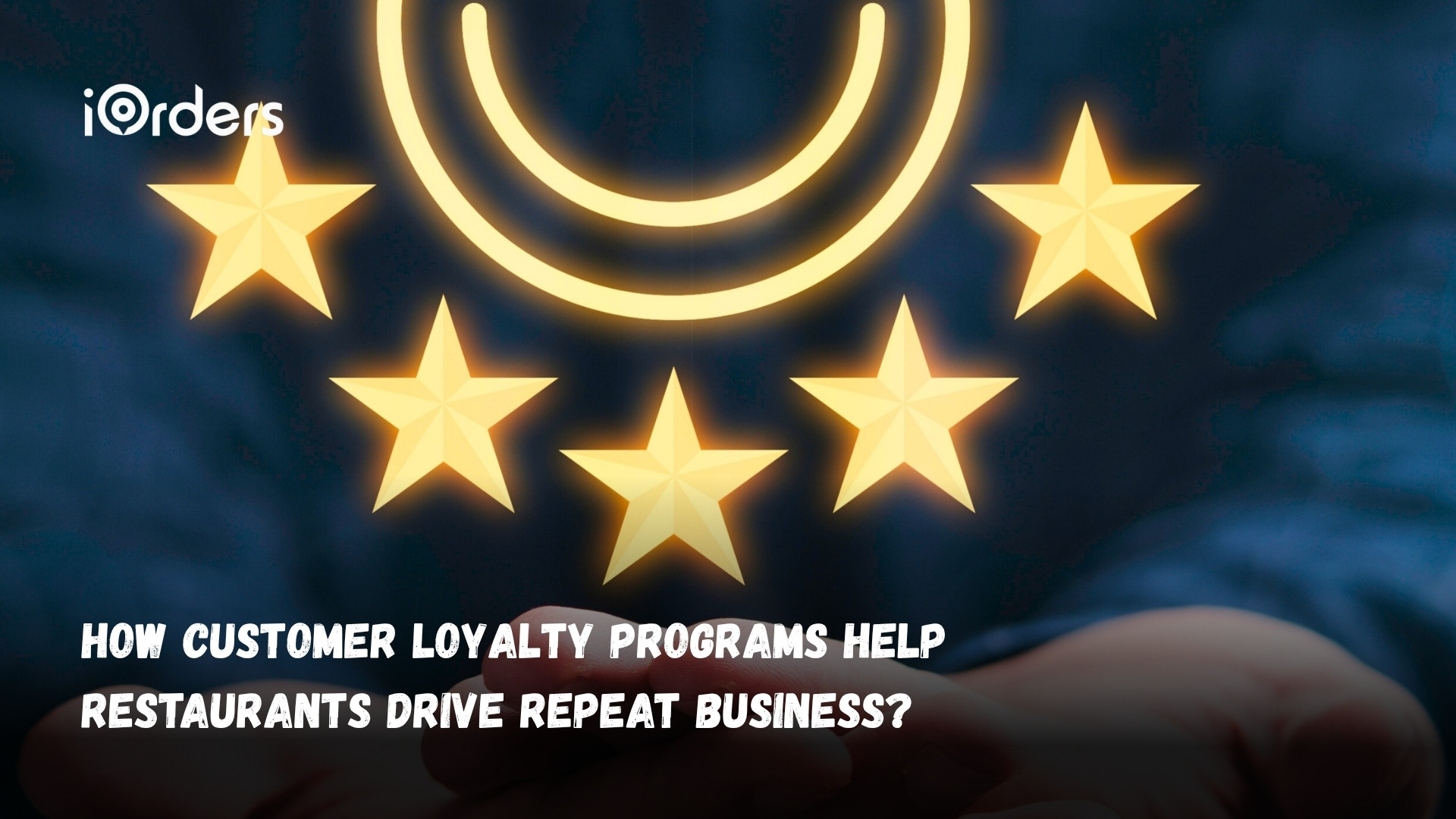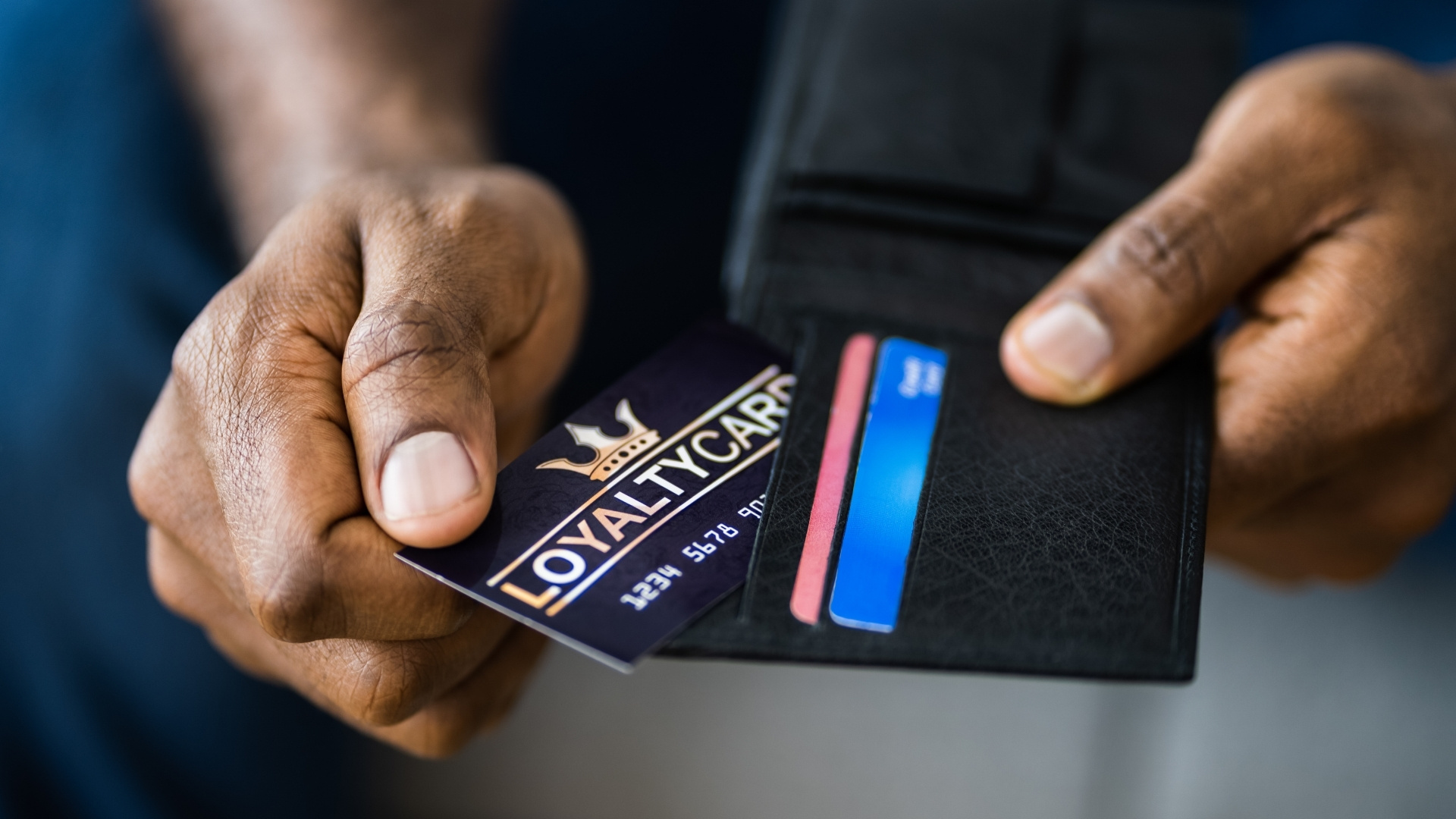November 18, 2025

Customer loyalty programs are now one of the most valuable assets for restaurants in today’s competitive dining market. With so many options available, diners return to restaurants that reward loyalty, offer personalized experiences, and make them feel valued. A strong loyalty program encourages repeat visits and builds long-term customer relationships.
Studies show that restaurants with effective loyalty programs see higher repeat visit rates, and customers respond well to personalized rewards and exclusive offers. This highlights the importance of designing, managing, and optimizing loyalty programs effectively.
By tracking purchases, rewarding engagement, and leveraging insights, loyalty programs help restaurants drive repeat business, increase order value, and strengthen connections with their guests.
This blog explores how these programs achieve results and strategies that make them successful.
Key Takeaways
A customer loyalty program is a structured system designed to reward repeat customers while gathering insights about their preferences and behavior.

It turns everyday interactions like orders, visits, and engagement with your brand into actionable data that helps restaurants increase repeat business, improve satisfaction, and grow revenue.
Key functions of an effective loyalty program include:
Together, these features from iOrders provide restaurants with a clear understanding of what drives customer loyalty programs and allow them to make informed decisions that strengthen relationships, increase sales, and create repeat visits.
Relying on informal perks, occasional discounts, or random incentives may seem sufficient, but it often misses the bigger picture. Without a structured approach, restaurants risk losing valuable insights and leaving revenue on the table.
Here’s why casual loyalty efforts aren’t enough:
A properly designed customer loyalty program does much more than offer discounts; it actively drives repeat business, increases order value, and strengthens long-term customer relationships.
Read our full guide: Best Sites for Online Restaurant Reviews, to learn which platforms matter most and how to manage reviews, reward repeat guests, and strengthen customer relationships effortlessly.
Implementing a digital loyalty program gives restaurants a clear view of customer behavior while rewarding repeat visits. These programs transform everyday purchases into valuable data and incentives, allowing restaurants to engage guests more effectively.

Instead of relying on sporadic promotions, restaurants can proactively encourage repeat business, higher spending, and long-term loyalty.
Digital loyalty programs increase customer frequency by offering tangible benefits for continued patronage. Points, discounts, and special offers incentivize diners to return regularly.
How it helps: Rewarding repeat visits keeps your restaurant top of mind for customers, encourages habitual ordering, and creates a competitive edge over restaurants without structured loyalty programs.
Examples include points per visit, free menu items after a set number of orders, or exclusive discounts for members. These perks make every interaction more rewarding and give customers a reason to choose your restaurant over competitors.
Modern loyalty programs leverage data to understand individual preferences. By tracking past orders and milestones, restaurants can tailor rewards to each customer.
How it helps: Personalization makes diners feel valued and understood, boosting emotional connection and loyalty. When a customer receives a discount on their favorite dish or a birthday reward, they’re more likely to return.
Examples: Birthday discounts on a favorite dish, rewards for trying new menu items based on past orders, or anniversary perks for regular diners. These tailored offers make customers feel special and more likely to return.
Loyalty programs can encourage bigger purchases by offering bonus points or tiered rewards for higher spending.
How it helps: Customers are motivated to try new menu items, add extras, or upgrade their meals, increasing average order value. Spend-based rewards create a win-win scenario, customers feel rewarded, and restaurants see higher revenue per visit.
Examples: Double points for orders above a certain amount, free drink with a main course and dessert, or tiered rewards, offering higher perks as spending increases. These incentives encourage bigger purchases while rewarding loyal behavior.
Also Read: Restaurant Loyalty Program Trends and Statistics for 2025
Digital loyalty apps eliminate the hassle of paper cards and manual tracking. Customers can check points, redeem rewards, and receive notifications in real-time.
How it helps: Easier access encourages participation, reduces errors, and ensures customers never miss out on rewards. This smooth experience strengthens their connection to your brand.
Examples: Mobile app dashboards showing points and rewards, QR code scanning at checkout to redeem points instantly, or push notifications for expiring rewards. These features make participation seamless and rewarding for every customer.
Digital loyalty programs collect measurable data on purchase patterns, engagement, and preferences.
How it helps: Restaurants can identify their most loyal customers, discover popular offerings, and adjust program mechanics to increase engagement. Decisions based on real data lead to smarter promotions, optimized menus, and higher satisfaction.
Examples: Tracking top-selling dishes to create bonus point campaigns, segmenting customers by visit frequency, or analyzing redemption rates to optimize rewards. These insights help restaurants deliver meaningful rewards and improve customer satisfaction.
Loyalty programs support targeted marketing campaigns through automated emails, push notifications, and in-app promotions.
How it helps: Restaurants can spotlight deals, launch limited-time offers, and motivate loyal diners to spread the word. Positive experiences repeat customers and turn them into advocates, bringing new patrons through organic referrals.
Examples: Referral campaigns offering points for inviting friends, weekend specials for loyalty members, or notifications about new menu items. These strategies encourage repeat visits and organic promotion by loyal diners.
Incorporating interactive elements like digital scratch-offs, spins, or challenges makes the loyalty experience enjoyable.
How it helps: Gamification increases repeat visits and engagement by adding an element of excitement. Friendly competition and rewards create memorable interactions that customers look forward to.
Examples: Spin-the-wheel promotions for bonus points, scratch-offs for free sides or drinks, or challenges like ordering three times in a month to unlock rewards. These interactive features make loyalty programs fun and memorable.
Some programs allow customers to donate points to charity or participate in community initiatives.
How it helps: Offering charitable options strengthens brand perception and builds goodwill. Customers feel proud to support causes while engaging with your restaurant, deepening their loyalty.
Examples: Converting points into meals for underprivileged communities, donating points to local events, or participating in environmental campaigns. These options allow customers to engage meaningfully while connecting with your brand.
Loyalty programs can trigger offers based on holidays, local events, or seasonal promotions.
How it helps: Timely, relevant rewards make customers feel connected and valued. Seasonal or location-specific deals create urgency and increase participation.
Examples: Holiday specials offering double points, sports event discounts for fans, or summer promotions like free iced beverages. These timely rewards create urgency and encourage participation.
Many loyalty apps integrate review systems, collecting and publishing customer feedback seamlessly.
How it helps: Positive reviews attract new diners while showing current customers that their opinions matter. This strengthens trust, encourages repeat business, and enhances overall brand reputation.
Examples: Rewarding points for leaving reviews, showcasing top-rated dishes, or offering perks for submitting feedback. These features strengthen trust, encourage repeat business, and enhance brand reputation.
By using digital loyalty programs as a structured engagement tool, restaurants can increase repeat visits, drive larger orders, and foster long-term customer relationships.
Launching a loyalty program is just the first step. What truly matters is how you manage, optimize, and act on the data and engagement it generates. When handled correctly, a customer loyalty program becomes a strategic tool that drives repeat business, strengthens your brand, and boosts revenue over time.

Here are some proven best practices for managing loyalty programs effectively:
Gather points, rewards, redemption activity, and customer interactions from every source as app, website, in-store, and email, into a single system.
Why it matters: Centralization provides a clear view of customer behavior, helping you identify trends, track engagement, and ensure no loyal customer is overlooked.
Use program data to tailor rewards and promotions based on past purchases, preferences, or milestones like birthdays and anniversaries.
Why it matters: Personalized incentives make customers feel valued, increasing the likelihood of repeat visits and higher engagement.
Identify your most active and high-value participants and offer exclusive perks, early access, or special recognition.
Why it matters: Recognizing your best customers motivates continued loyalty and encourages others to increase participation to reach similar benefits.
Not every customer interacts with your program the same way. Some may be frequent visitors, while others engage occasionally.
Why it matters: Segmenting your audience allows you to focus on the strategies that drive the most impact, whether it’s encouraging new users, retaining regulars, or incentivizing higher spending.
Use technology to track points, reward redemption, and engagement metrics automatically. Analyze data to identify patterns and optimize program mechanics.
Why it matters: Tools like digital loyalty platforms reduce manual work, highlight trends, and ensure rewards and communications are timely, relevant, and brand-consistent.
Keep customers informed about their rewards, special promotions, or program updates through email, app notifications, or in-store reminders.
Why it matters: Demonstrating that their participation matters and leads to real benefits builds trust, strengthens loyalty, and encourages ongoing engagement.
When loyalty programs are managed effectively, they go beyond simple discounts; they become a driver of repeat business, larger orders, and stronger customer relationships.
Restaurants often struggle to keep customers coming back consistently. Great food and service are essential, but without structured incentives, diners may choose competitors or one-time offers.
A well-designed customer loyalty program helps you build lasting relationships, drive repeat visits, and increase revenue, without relying on random promotions.
Customer loyalty programs give you the tools to reward your guests, gather insights, and encourage repeat business. With the right system, every interaction becomes an opportunity to strengthen customer relationships and grow your restaurant smarter.
Here’s how customer loyalty programs can help your restaurant succeed:
Restaurants using structured loyalty programs have seen significant growth in repeat visits, larger order sizes, and stronger customer engagement.
By implementing a program effectively, you keep customers coming back, increase lifetime value, and build relationships that last, while keeping control of your brand experience.
A structured customer loyalty program helps restaurant owners retain guests, encourage repeat visits, and grow revenue with confidence. From rewarding frequent diners to personalizing offers, loyalty programs are the foundation of long-term success.
With digital loyalty tools, restaurants gain a commission-free, automated solution that simplifies rewards management, tracks customer activity, and strengthens relationships with guests.
Book a free demo today with iOrders to see how intelligent loyalty program tools can help your restaurant thrive and drive repeat business.
1. What exactly is a customer loyalty program?
It’s a system that rewards your regular customers with points, discounts, or special perks to encourage them to keep coming back.
2. Why should restaurants use customer loyalty programs?
They help bring guests back more often, build stronger relationships, and turn one-time visitors into repeat customers.
3. How do customer loyalty programs make things easier?
They track customer purchases automatically, send rewards and personalized offers, and save staff from manual management.
4. Can loyalty programs really increase restaurant revenue?
Yes. By encouraging repeat visits and offering targeted rewards, they can boost spending and overall profits.
5. Are loyalty programs suitable for smaller restaurants, too?
Definitely, even small restaurants can retain customers and grow their business with easy-to-use digital loyalty programs.